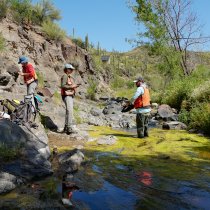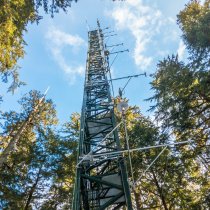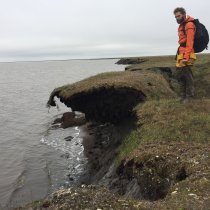White House Climate Data Initiative Addresses Climate Change Through Open Data
April 9, 2014
On March 19, 2014, the White House launched the Climate Data Initiative (CDI), part of President Obama's Climate Action Plan launched in June 2013. The Climate Action Plan is the Administration's blueprint for domestic and international efforts to prepare for the impacts of climate change and reduce carbon emissions. The CDI is meant to spur the innovative use of open machine-readable government data to help communities deal with the impacts of climate change.
I attended the CDI launch, courtesy of the White House and the Foundation for Earth Science (the Foundation is the governance entity of the Federation of Earth Science Information Partners ESIP: of which NEON is a member institution). In addition to announcing the web portal climate.data.gov, the event also showcased the role of the private sector in accelerating the innovative use of open data through public-private partnerships. Dr. John Holdren, President Obama's science advisor and Director of the White House Office of Science and Technology Policy, opened the event to a packed room of invited guests in the Eisenhower Executive Office Building's auditorium. Notable speakers included John Podesta (Counselor to President Obama), Jack Dangermond (Founder and CEO of Esri), and Kathryn Sullivan (recently confirmed NOAA Administrator).
In earlier events, Dr. Sullivan highlighted the role environmental intelligence, which she defined as "timely, actionable information, developed from reliable and authoritative science, that gives us foresight about future conditions." Once fully commissioned, NEON will also play a role in providing the data and information to advance the type of continental-scale science that will ultimately be useful for decision-making and resource management. Regardless of whether NEON's calibrated or gridded-model data products are incorporated into climate.data.gov or the upcoming ecosystems.data.gov, we anticipate those data products to be widely used in innovative spatio-temporal analyses: from simple regressions to complex data assimilation models.
Those analyses will help inform questions of broader societal-relevance, including ameliorating the impacts of climate change. The ongoing work by the informatics community on provenance ("history") and scientific workflows will help provide that linkage between NEON's data and information and how it impacts societal benefit areas like agriculture, health, and energy.



